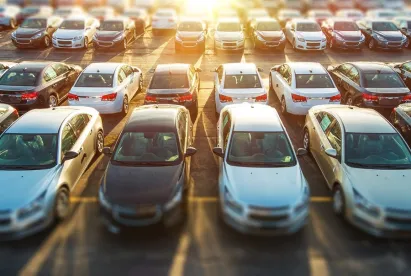In advance of the Trump Administration’s plans to move forward with less-restrictive standards for light duty vehicles, four major automakers have negotiated an agreement–in-principle with the California Air Resources Board (“CARB”) to provide an alternative approach to reducing greenhouse gas emissions and improving fleet fuel economy. The terms of the private deal with California may provide a template for avoiding a major potential split in standards applicable to the U.S. market – the California versus the federal – and the uncertainty of extended litigation over the issue of the extent of California’s authority to promulgate auto emissions standards without Environmental Protection Agency (“EPA”) approval.
Under the agreement, Ford, Honda, BMW of North America, and Volkswagen Group of America have committed to reducing their vehicles’ average emissions by 3.7% year over year through Model Year 2026 (inclusive of several major new accounting flexibilities outlined below), ultimately reaching the adjusted equivalent of roughly 51 mpg fuel efficiency. By comparison, the EPA’s proposed Safer Affordable Fuel Efficient Vehicles (“SAFE”) Rule – slated for finalization later this year – would freeze the standard at 36.9 mpg for Model Years 2020 through 2026.
The CARB agreement would provide significant new flexibility while, at the same time, providing additional regulatory support in the market to electric and hybrid vehicle manufacturers. For example, the agreement would extend the availability of “advanced technology multiplier” credits which would provide further competitive incentives for the development of electric and other low-emissions vehicles. The multipliers, currently set to expire after Model Year 2021, allow manufacturers to count the sale of each electric, plug-in hybrid electric, fuel cell, and compressed natural gas vehicle as more than one vehicle in their fleet compliance calculations. The agreement would extend the multipliers through Model Year 2024, providing double credit for battery and fuel cell electric vehicles, and 1.6x credit for plug-in hybrid electric vehicles. Perhaps just as significantly, participating automakers would (1) be excused from accounting for “upstream” emissions in their compliance calculations, and (2) would be eligible for up to an additional 5 grams per mile of credits for “off cycle” emission reduction measures.
Significantly, the agreement is voluntary, and for the moment, does not contemplate a CARB rulemaking. While the participating automakers have committed to recognizing California’s authority to regulate their compliance with the agreement, that would not address the issue of whether the twelve CAA § 177 “me too” states that follow California standards would be in a position to adopt and enforce a similar scheme without the legal predicate of an enforceable rulemaking.
The agreement, nonetheless, has the potential to impact a large percentage of the U.S. auto market. The four automakers represent approximately 30% of vehicle sales nationwide. Given that market share and the compliance flexibilities CARB has made as part of the agreement-in-principle, it will likely place pressure on other large automakers to consider joining the agreement and expanding its reach.







 />i
/>i
